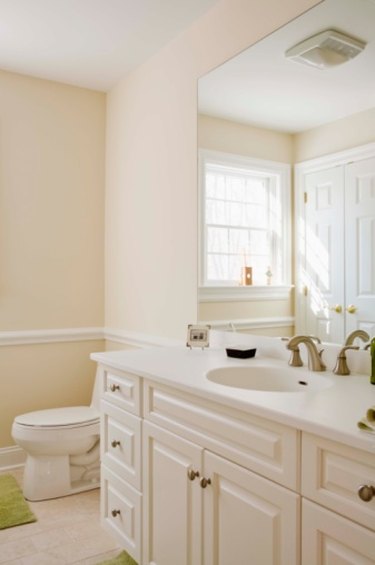Things You'll Need
Sketch paper
Pencil
Mirror

Mirrors come in various shapes, and drawing the shape of a mirror is easy. However, incorporating a mirror into a drawing and having it recognized as a mirror takes a bit of thought. The mirror's job is to reflect. It reflects everything in front of it, head-on or angled as a mirrored image. It also reflects light, which creates shadows and shine. Drawing a mirror adds interest, artistic value and maybe even visual clues or mystery as to what is going on in your sketch.
Step 1
Sketch or draw the mirror's shape on your paper with a pencil. Common mirror shapes are rectangle, square and oval.
Video of the Day
Step 2
Complete the mirror's frame by adding the same, smaller, second shape inside of the first. Decorate the frame any way you choose to add interest, dimension and texture -- or leave it plain.
Step 3
Envision which direction the reflective light will come from in your scene, whether from a window or light fixture, before continuing your drawing. Picture the reflection in a drawing as it lands and creates shadows over everything shown in the mirror. Imagine mirror images at the angle from which they reflect depending on the "point of view" of your drawing; if you stand 30 degrees off center from a mirror, the mirrored images will appear at a 30-degree angle in the reflection.
Step 4
Stand in front of an actual mirror to look at how the room's light source creates shadows and gleam on everything it reflects. Next, step from side to side to determine the angles of reflection from different points of view. Finally, decipher the mirror's "framed" view, which includes only parts of the objects in the reflected space, or scene behind you.
Step 5
Draw your mirrored scene from your sketches' prospective point of view to reflect object parts in the mirror. For example, if your mirror is in the dining room, you could include part of a tabletop, set with steaming hot food; the lower corner of the artwork hanging on the opposite wall; an opening into the kitchen showing a few cupboards, part of a fridge and a young boy sneaking into a cookie jar. For realistic detail, incorporate the gleam and shadowing cast by the froufrou chandelier over the entire setting.
Tip
Everything reflected in a mirror is a “mirror reflection,” opposite to how things actually sit in a space -- remember this point when you complete the rest of the room in your drawing.
Leave the wall that the mirror is hanging on plain to avoid distractions.
Video of the Day